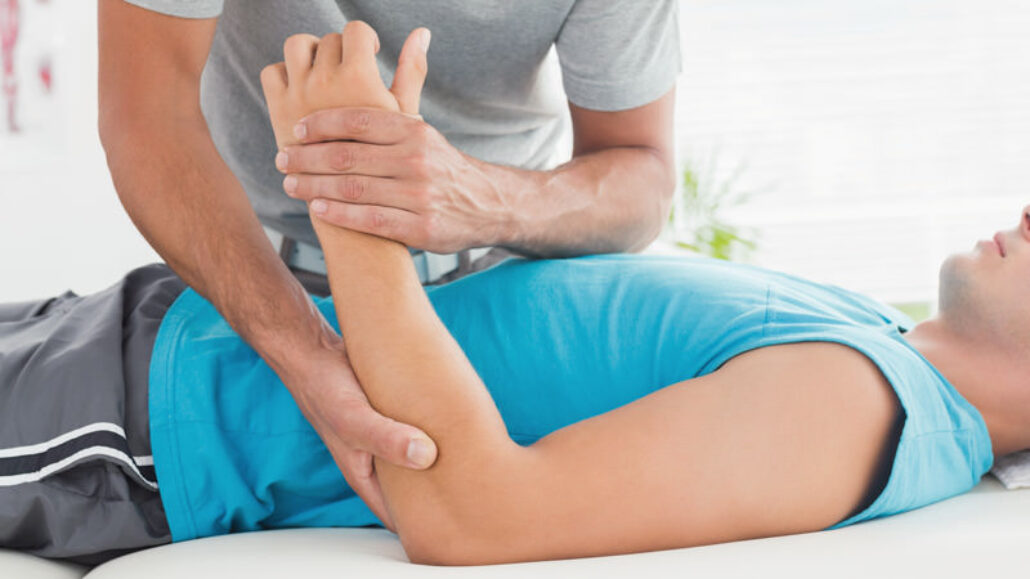Pain in your kneecap, heel, elbow, or other joints could signal tendon damage. Dr. Scofield describes the symptoms of tendinopathy and explains when ongoing joint pain should be medically evaluated.
Summit sports medicine physician Dr. Kirk Scofield has firsthand experience with tendinopathy. “I was working with my trainer and doing battle ropes in the gym when I suddenly felt pain in my elbow,” he remembers. “I had partially torn my tendon.”
Sometimes, tendon injury happens the way Dr. Scofield experienced it—with a sudden acute injury. For others, the injury to a tendon—in the elbow, knee, or another joint—can develop slowly through micro-tears resulting from overuse or repetitive motions over a longer period of time.
“In my case,” says Dr. Scofield, “my injury didn’t heal immediately and developed into a chronic tendinopathy that continued to bother me off and on for almost a year. With physical therapy exercises, I did heal, but it was a prolonged recovery. That’s why I am happy to evaluate anyone who has been experiencing recurrent pain that doesn’t seem to be getting better with time.”
You may have chronic tendon pain if you are experiencing the following symptoms:
- Recurring pain in your foot, kneecap, Achilles tendon, hip, elbow, or shoulder.
- Joint-related pain triggered by the activities of daily living or by work- or sports-related activities.
- Pain that has continued or recurred for more than two or three weeks.
“Chronic tendinopathy is not a life-threatening condition,” says Dr. Scofield. “But research tells us that people with chronic tendon problems— Achilles tendinopathy, for example—are at higher risk of rupturing their Achilles than people who don’t have tendinopathy. Healthy tendons are vulnerable to rupture too; but you are a little more likely to rupture the tendon when you have a chronic tendinopathy.
“Tendinopathy pain can also cause us to guard against discomfort by restricting our movement. That guardedness can cause complications, especially in the lower extremities. When we change our gait to avoid pain, we put our physical mechanics under stress, which can trigger a cascade of musculoskeletal problems.
“If you are experiencing pain that has not gone away after a week or two, you can always come in and see me for an evaluation,” says Dr. Scofield. “In most cases, conservative treatments like physical therapy, braces, or orthotics, with judicious use of over-the-counter pain medications or ice, can resolve the issue. If conservative management doesn’t resolve pain within four months, we may consider other treatment options, including a new Tenex procedure based on ultrasound technology that is far less invasive than surgical options.”
Summit Orthopedics offers comprehensive sports medicine expertise
From Olympians to pro athletes to kids in youth sports and those that just want to be more active—Summit Orthopedics delivers expert care by fellowship-trained sports medicine physicians. If you are recently injured or concerned about ongoing pain, Summit Orthopedics sports medicine specialists have the expertise to evaluate your discomfort and develop a plan to quickly and safely help you get back to being active.
Start your journey to stronger, healthier athletic condition. Find your sports medicine expert, request an appointment online, or call us at (651) 968–5201 to schedule a sports medicine consultation.
Summit has convenient locations across the Minneapolis-St. Paul metro area, serving Minnesota and western Wisconsin. We have state-of-the-art centers for comprehensive orthopedic care in Eagan, MN, Vadnais Heights, MN, Plymouth, MN, and Woodbury, MN, as well as several additional community clinics.

